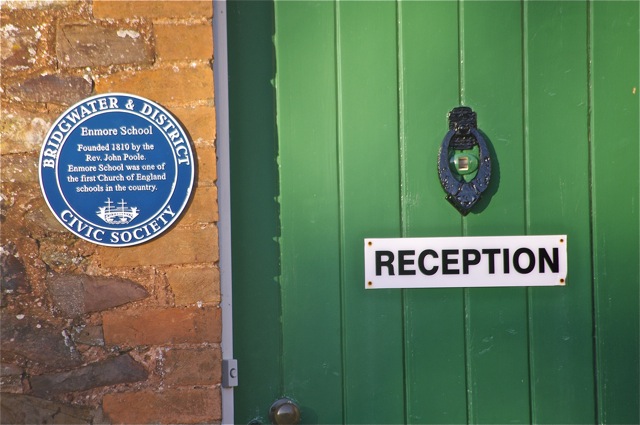
Founded in 1810, Enmore School is believed to be one of the first free Church of England schools in England. It was originally held in a small cottage near the parish church, the current building having been built in 1848. It was founded by Reverend John Poole, the Anglican vicar of the Parish. John was a Fellow of Oriel College, Oxford. The school became a model institution, and was a victim of its own success, as its teachers were apparently lured away to found schools elsewhere.
Two years after Enmore was founded, John Poole’s cousin, Thomas Poole (the Friend of Coleridge) opened a similar school in Nether Stowey.
The plaque was unveiled by Lady Gass on Thursday 25th November 2010 at the School.
Enmore, from ‘ened-mere’ literally means ‘duck pond’. The manor house of Enmore was remodelled in the 1750s to create what was called Enmore Castle, a vast country seat in a castellated style, which was largely demolished in the twentieth century.
Not far from Enmore away from Bridgwater is the village of Spaxton. The name means the farming settlement belonging to either a man called Spakr (a Danish name) or the belonging to ‘the Counsellor’. In the nineteenth century the village was home to a notorious religious cult called the Agapemone, the abode of love.
To the south east of Enmore is Goathurst, ‘the wooded hill where Goats are reared’. Here is the beautiful Halswell House which was home to the Tynte family. Between 1745 to 1785 the park and house were developed to create what is reputed to be one of the finest landscape gardens in Europe. The park contains some architectural wonders including what is called Robin Hood’s Hut, a pavilion on a hill for viewing the surrounding landscape, and the Temple of Harmony, a replica of the first century Roman Temple of Fortuna Virilis, both of which are Grade II listed and have been recently restored by the Halswell Park Trust.
